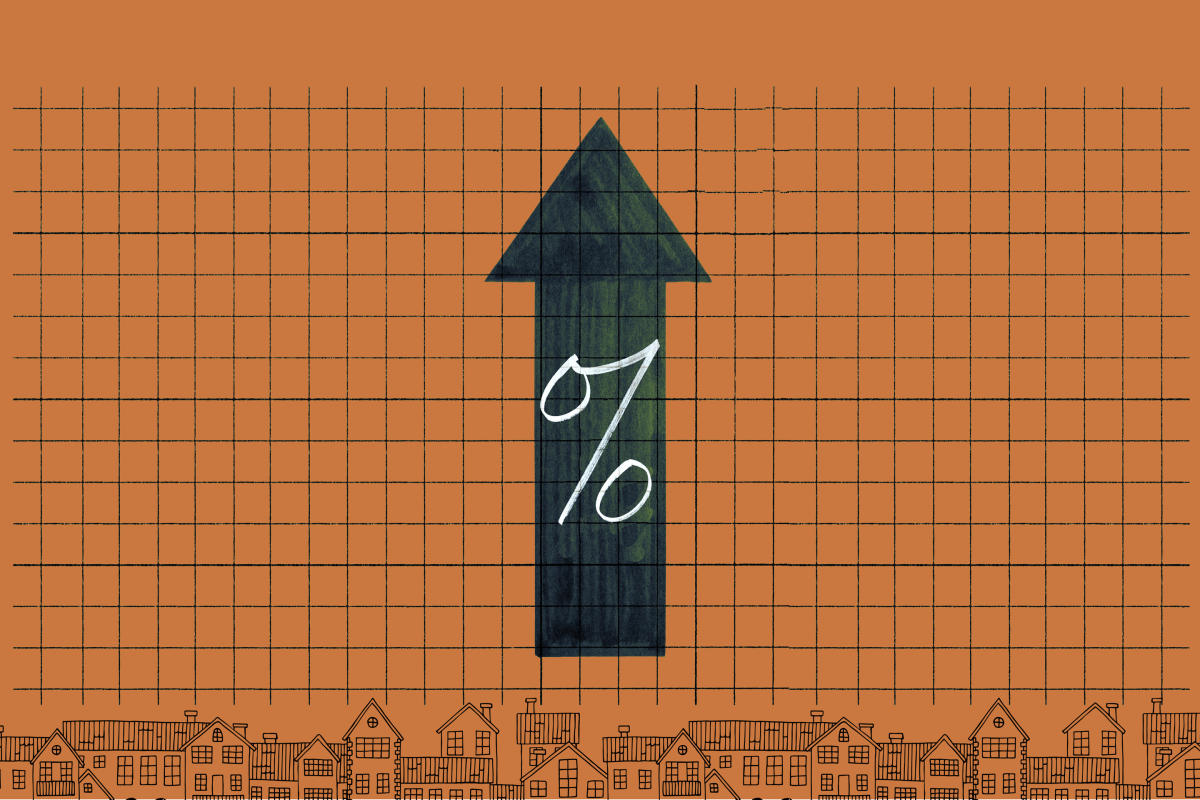Personal Finance
Mortgage Rates Edge Even Closer to 7%: Freddie Mac

The housing market continues to cool as it heads into the spring buying season. Mortgage rates increased for the fifth straight week, stretching even further the ability of potential homebuyers to jump into a purchase.
The average rate on a 30-year fixed-rate mortgage increased to 6.73% for the week ending March 9, according to Freddie Mac’s benchmark rate analysis. That’s a change of 0.08 percentage points over the past seven days. The rate on a 15-year fixed-rate loan also increased, moving up by 0.06 percentage points to 5.95%.
Mortgage rates are likely to stay in the 6% to 7% range for the time being, say analysts, as the U.S. economy continues to fight off persistent inflation and the fears of an economic recession. The longer rates stay on the higher end of that range, experts add, the harder it’ll be for house hunters, and especially first-time buyers, to find a home that’s within their budget.
Higher rates continue to affect those sectors of the economy that are especially rate-sensitive, such as housing, said Sam Khater, Freddie Mac’s chief economist, in a press release. The end result, added Khater, is that “would-be homebuyers continue to face the compounding challenges of [un]affordability and low inventory.”
The ability of homeowners to buy has been an issue since interest rates started to climb at the beginning of last year. Affordability hit a new low in 2022, when just 21% of homes on the market were considered affordable — which brokerage Redfin defines as having mortgage payments that account for no more than 30% of the median local income.
And there’s little optimism that the affordability squeeze will improve. The ability to buy a home may remain near historic lows this year unless home prices drop more than they have, mortgage rates start falling again or there’s a significant increase in the housing supply — or a combination of all three factors.
High inflation keeps upward pressure on mortgage rates
Recent economic data points to a labor market that is still fairly strong despite the Federal Reserve’s efforts to slow down price growth. As a consequence, interest rates are likely to stay on the high side for the time being.
On Wednesday, the Labor Department released its Job Openings and Labor Turnover Survey (JOLTS) for January, showing that there were more than 10.8 million job openings that month. This works out to about 1.9 job openings per available worker.
The survey findings indicated a decrease in the number of job postings compared to December. The number of new jobs was still higher, though, than the 10.58 million that analysts expected. The Federal Reserve looks at the JOLTS report for signs of weakness in the labor market, which in turn can influence decisions regarding the central bank’s monetary policy.
Wednesday also saw the release of a report from payroll services firm ADP showing that private payrolls, or the number of new hires, increased by 242,000, a number higher than the 205,000 that was anticipated by analysts. More workers hired, and more to come through new job postings, point to the continued heating of the economy, and to higher prices. In all, this week’s two reports portray a resilient labor market that is apparently impeding the Fed’s plan to bring inflation back to its target range of 2%.
In testimony before Congress this week, Fed chairman Jerome Powell noted that despite inflation coming down from its peak of 9.1% last summer, it is still running higher than envisioned.
Combined with the tight labor market and wage growth that remains “above what is consistent with 2 percent inflation,” Powell anticipated the Federal Reserve would have to continue its aggressive monetary policy for a longer period of time.
Last March the Fed started implementing a series of increases in the federal funds rate, which is the rate banks charge each other for short-term loans. Those hikes offer a means for the Fed to slow spending and bring inflation back under control, since they increase the cost of borrowing for both banks and consumers.
With inflation higher than the central bank would like at this point, Powell noted that there is still more work to be done.
“The process of getting inflation back down to 2 percent has a long way to go and is likely to be bumpy,” said Powell in his testimony. “The latest economic data have come in stronger than expected, which suggests that the ultimate level of interest rate is likely to be higher than anticipated.”
Markets are now looking to the next jobs report, set to be released on March 10, for guidance as to what the central bank will do at the next Federal Open Market Committee meeting later this month — and how the Fed’s moves might affect interest rates.
“With the Fed firmly focused on wage growth, the upcoming February employment report could cause more policy uncertainty and higher mortgage rate volatility,” said Orphe Divounguy, senior macroeconomist at Zillow, in a prepared statement. “Cooling wage growth in this week’s jobs report could send mortgage rates back down.”
More from Money:
Best Mortgage Lenders of 2023
Mortgage Calculator by Money
How to Get the Lowest Mortgage Rate: A Step-by-Step Guide
© Copyright 2023 Money Group, LLC. All Rights Reserved.
This article originally appeared on Money.com and may contain affiliate links for which Money receives compensation. Opinions expressed in this article are the author’s alone, not those of a third-party entity, and have not been reviewed, approved, or otherwise endorsed. Offers may be subject to change without notice. For more information, read Money’s full disclaimer.
Read the full article here

-

 Passive Income5 days ago
Passive Income5 days agoThe One Microsoft Design Tool Business Owners Shouldn’t Miss
-

 Side Hustles3 days ago
Side Hustles3 days agoThe DOJ Reportedly Wants Google to Sell Its Chrome Browser
-

 Side Hustles6 days ago
Side Hustles6 days agoHoliday Savings: Get a MacBook Air for $250
-

 Investing4 days ago
Investing4 days agoThis Founder Turned a Hangover Cure into Millions
-

 Investing5 days ago
Investing5 days agoYour Firsthand Experiences Shape the Way You Run Your Business — Here’s How Mine Shaped Me
-

 Make Money6 days ago
Make Money6 days ago7 Common Retirement Planning Mistakes and How to Avoid Them
-

 Side Hustles3 days ago
Side Hustles3 days agoHow to Create a Unique Value Proposition (With Tips & Examples)
-

 Investing6 days ago
Investing6 days agoWant to Be a Better Coach? Focus on This One Overlooked Skill


















